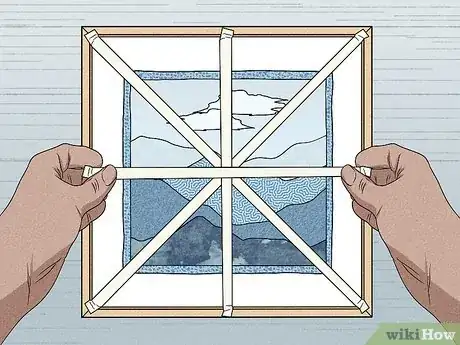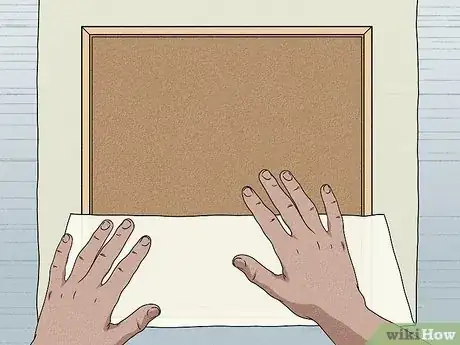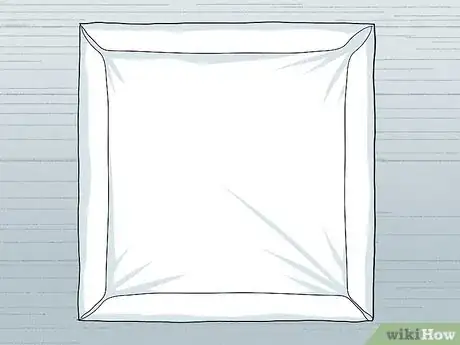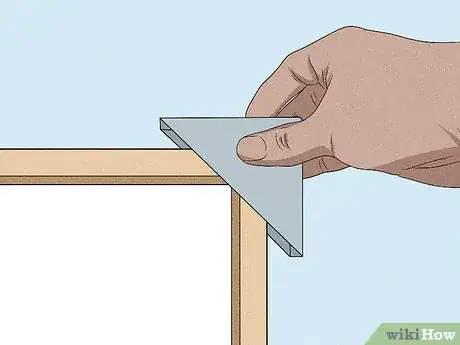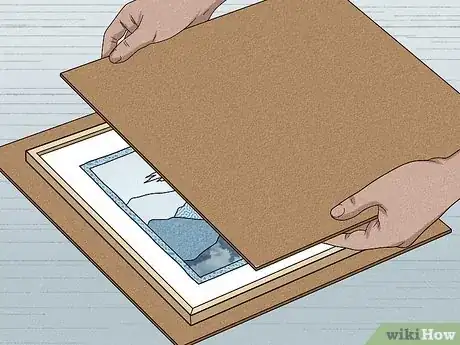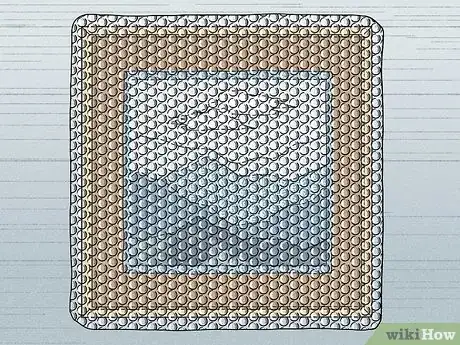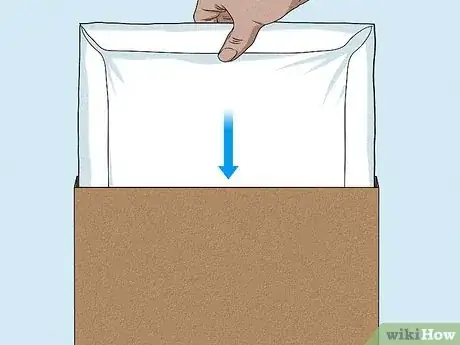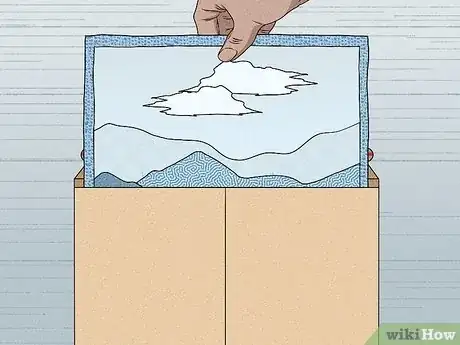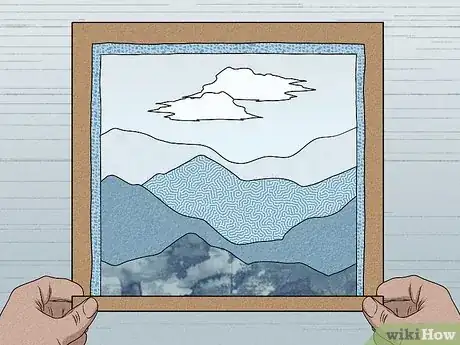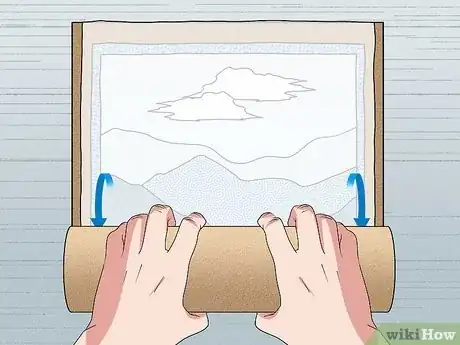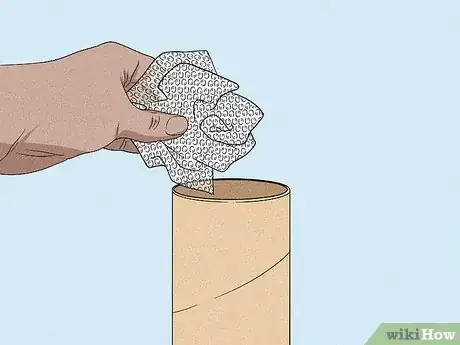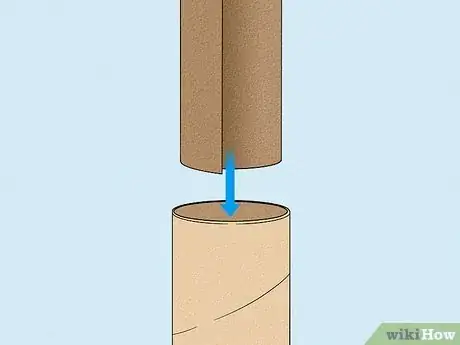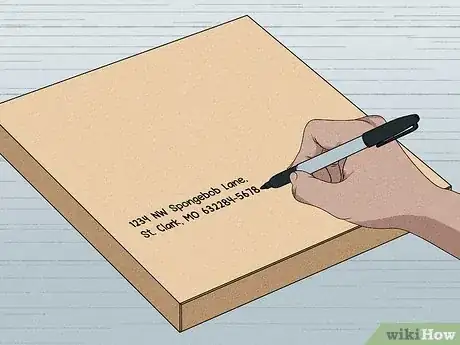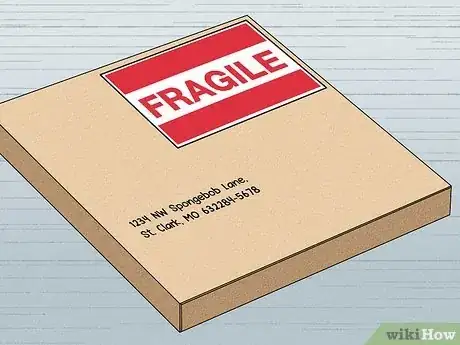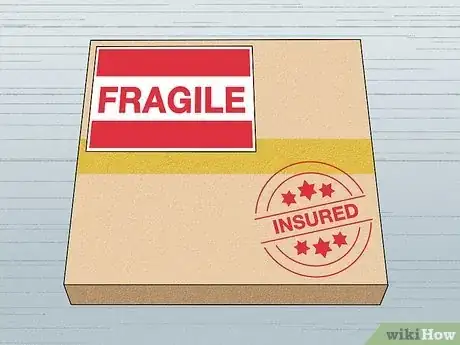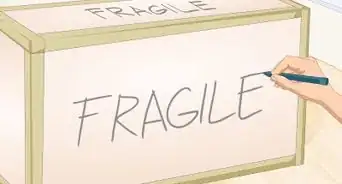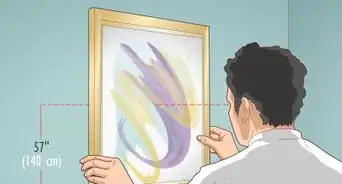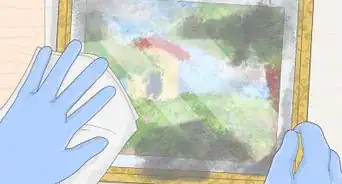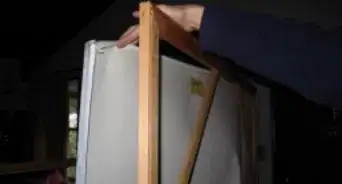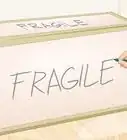This article was written by Antoine de Villiers and by wikiHow staff writer, Hunter Rising. Antoine de Villiers is an Artist and the Founder of Antoine Art Studio LLC based in Savannah, GA. Antoine has over 25 years of experience, specializing in oil painting, graphite & charcoal drawing. She has had over 70 exhibitions around the globe and her work has received numerous awards including Best Figurative Artist by The Richmond Art Museum, Indiana (USA), Best Solo Artist by Eric Smith at the New York Art Expo, and first place in Figurative Painting by Pamela Jean Tinnen from Artrepreneur. She earned her Web Design Diploma from Boston Business College and studied Indian Art, Visual Art, and Modern Art at the University of Oxford, Department of Continuing Education.
There are 14 references cited in this article, which can be found at the bottom of the page.
This article has been viewed 68,819 times.
So you sold artwork or want to send a piece of art to someone, but how can you make sure it arrives in perfect condition? No matter what type of art you're sending out, it's really easy to pack up your work and ship it without the risk of damage. Whether you're mailing framed pieces, canvas paintings, art prints, or posters, we've got you covered! Keep reading for everything you need to know about packing your art so it gets delivered safely!
Steps
Packaging Canvas Paintings and Framed Art
-
1Tape an “X” on the glass pane if your artwork is framed. Taping the glass on framed art makes it less likely that it will shatter and damage your piece. Take a strip of tape and place it diagonally across the glass from corner to corner. Put another strip of tape down so it crosses through the 2 untaped corners.[1]
- When you’re packing larger frames, add 2 more strips of tape to make a star-shaped pattern on the glass for additional protection.
-
2Wrap the artwork in glassine paper. Use a sheet of glassine paper that’s at least 2–3 inches (5.1–7.6 cm) larger than your artwork. Lay the paper flat on a table and set your work face-down on top of it. Fold the excess paper around the sides of the frame or canvas, and tape the edges down with packing tape so your art doesn’t shift around inside of the paper.[2]
- Glassine paper is acid-free, and it helps prevent any damage to the surface of your artwork.
- You don’t have to completely cover the back of your artwork with glassine.
- Tape the glassine paper to itself on the folds in the corners so the tape doesn’t stick to your artwork. If the adhesive gets stuck on the frame or canvas, you could damage it when you take the tape off.
Advertisement -
3Protect the art from moisture with a layer of plastic sheeting. Cut a piece of polyurethane plastic sheeting that’s large enough to cover the front and back of your artwork. Set your artwork on the plastic sheeting and wrap it around the canvas or frame so it’s completely covered. Seal all of the seams and slits in the sheeting down so it’s secured around your artwork.[3]
- In a pinch, you can cut down a garbage bag to wrap around your artwork instead.
-
4Brace the corners of your artwork with corner supports. Since the corners are common areas that get damaged when you mail art, added protection will keep your artwork safe. Fold some cardboard corner supports and slide them onto the corners of your wrapped frame or canvas.[4]
- The corners should hold tightly on their own, but tape them to the plastic sheeting if they wobble or feel loose.
-
5Sandwich your painting between cardboard or foam board. Cut out 2 pieces of cardboard or foam board so they’re the same size as your canvas or frame. Set your art onto one of the pieces and set the other piece on top of your work. Secure the cardboard or foam to your art with tape in the corners and in the middle of each side.[5]
- The cardboard or foam helps protect your art from any punctures that could break through the box during transit.
- Put an extra layer of cardboard around the corners since this is where damage most likely occurs.
-
6Cover the painting or framed art with a layer of bubble wrap. Cut enough bubble wrap to cover the front and back of the artwork you’re mailing. Lay the bubble wrap so the bubbles are face-up and set your artwork on top. Fold the bubble wrap over your piece and tape the edges down to secure it in place.[6]
- Bubble wrap helps cushion your artwork so it doesn’t get damaged if it gets jostled around.
-
7Pack the artwork snugly into a box. Measure the length, width, and height of your wrapped artwork and find a shipping box that has the same dimensions. Package your artwork carefully into the box and tape all of the seams closed.[7]
- Many courier services have shipping boxes you can buy at their offices, but you can also find them at a hardware store.
- If you can’t find a box that’s exactly the size you need, get the next largest size and stuff the excess space with more bubble wrap. If there’s too much space in the box, your art will shift around and could get damaged.
Flat-Packing Prints and Unframed Paintings
-
1Cover the artwork in glassine paper. Trim a piece of glassine paper so it’s 1–2 inches (2.5–5.1 cm) larger than the dimensions of your artwork. Lay the glassine down on a table and set your artwork face-down in the middle of the sheet. Fold the edges over the back of your print and tape them down with packing tape.[8]
- Put on white cotton gloves when you handle your artwork so you don’t leave prints or damage on it.
- Tape the corners of the glassine paper where the folds overlap each other rather than taping paper directly to the print. The tape might rip your art if there’s tape stuck to it when someone unwraps the glassine.
-
2Tape your art between 2 sheets of cardboard. Cut a piece of cardboard down into 2 sheets that are about 1–2 inches (2.5–5.1 cm) larger than your artwork. Set your art on one of the cardboard pieces and set the second piece on top so the edges line up with the bottom one. Rip off strips of your packing tape that are the same lengths as the sides of the cardboard, and secure the top piece tightly to the bottom piece along each of the edges.[9]
- The cardboard keeps your artwork flat so it doesn’t bend or crease when you mail it.
-
3Wrap the cardboard pieces in a layer of bubble wrap. Cut a piece of bubble wrap that’s large enough to cover the entire artwork. Lay the bubble wrap down with the bubbles facing up and set your artwork on top of it. Fold the edges of the bubble wrap around the cardboard pieces and tape them down securely.[10]
- The bubble wrap helps pad the box or envelope and can also prevent puncture damage.
-
4Pack the artwork into a rigid envelope or snug box. Measure the dimensions of your artwork now that it’s wrapped so you know what size envelope or box you need. If you’re packaging a small art print, it might fit inside of a rigid envelope with reinforced sides. Otherwise, put your artwork in a shipping box and tape the seams closed.[11]
- If there’s extra space inside of the box after putting in your artwork, stuff the sides with extra bubble wrap.
Rolling Unframed Art in a Tube
-
1Set the artwork on a large piece of craft paper. Roll out craft paper that’s about 2–3 inches (5.1–7.6 cm) larger than your artwork on each side on a flat surface. Place your print or poster in the middle of the paper so it’s face-up.[12]
- Craft paper is acid-free, so it won’t damage or leave marks on your artwork when you pack it.
- Wear a pair white cotton gloves when you handle your art so you don’t smudge or leave prints on it.
-
2Fold the bottom edge of the craft paper up. Take the edge of the craft paper closest to the bottom of your artwork and fold over a flap that’s about 1 inch (2.5 cm). Slide the artwork down into the crease of the flap so it doesn’t slide out when you start rolling it up.[13]
-
3
-
4Roll the artwork into a tube starting near the bottom. Hold onto the bottom edge of your artwork and carefully bring it toward its top edge to form a loose roll. Slowly pull the roll back towards the bottom to tighten the roll and make the diameter of the tube smaller. Hold your rolled art with one hand so the diameter stays the same size when you roll it up. Then, roll your art back toward the top edge of the paper and secure the roll with a piece of packing tape.[15]
- Take your time as you’re rolling it up and avoid pushing down too hard so you don’t crease your artwork.
-
5Fill the bottom of a mailing tube with bubble wrap. Get a mailing tube that’s just wider than the diameter of your rolled artwork so it doesn’t move around in transit. Put a piece of bubble wrap into the tube and press it down to the bottom so your art doesn’t get damaged if it moves from side to side.[16]
- You can use crumpled paper if you don’t have any bubble wrap.
-
6Slide the rolled art into the tube and seal it. Carefully push your artwork all the way into the mailing tube so the end rests on the bubble wrap. Put one more piece of bubble wrap on the top end of your artwork before putting the cap on the end of the tube and taping it closed.[17]
- It’s okay if the artwork touches the sides of the tube or if there’s space in the middle of the rolled artwork. Since the artwork is rolled and the tube is sturdy, you don’t need to fill the tube in.
Sending Your Artwork
-
1Write the recipient’s address on the box or tube. Double-check that you’re using the correct address so your artwork doesn’t get returned to you. Use a thick marker or a pen to clearly write the name and address of the recipient so the delivery service you use can easily read it.[18]
- You can also print off the address and tape it onto the box or tube you’re using if you want something more legible.
- Remember to include your return address so the recipient can reach you.
-
2Label your box or tube with “Fragile” stickers. Place a fragile sticker on each side of the box or tube. That way, the delivery person knows that they should handle the package with care so your artwork doesn’t get damaged.[19]
- If you’re sending a framed piece, write “Glass” next to the fragile sticker so the delivery people and recipient know to be extra careful.
-
3Pay postage for a courier service to mail your artwork. You can send your artwork through the standard mail service or use another courier service. The price for sending your artwork varies depending on the package’s size and weight, and some courier services have limits on the items that you can send. Choose whichever service is the most cost-effective and convenient for you to use.[20]
- The United States Postal Service is usually the cheapest option, but you cannot have any packages that are heavier than 70 pounds (32 kg) or larger than 108 in (270 cm) in total length and girth.[21]
- UPS or FedEx are both reliable options that are a little more expensive, but offer additional tracking and insurance on your packages. Both UPS and FedEx have weight limits of 150 pounds (68 kg).
- If you have an oversized, antique, or expensive piece of art, contact a fine art shipping service since they can help you safely pack and deliver your art.
-
4Get shipping insurance for your artwork. No matter how large your artwork is, pay for shipping insurance to cover any damage in case something happens during transit. The courier service you use will offer insurance so you can easily add it right when you mail your artwork.[22]
- Some courier services have limits on how much you can insure per package.
- You can also talk to your current homeowner insurance provider to see if you can add shipping insurance to your policy.
Warnings
- Avoid putting bubbles on bubble wrap directly against the surface of your art since they could stick to the paint and ruin the finish of your artwork. If there are layers of cardboard or paper in between the bubble wrap and your art, then it’s okay for the bubbles to face in.[23]⧼thumbs_response⧽
Things You’ll Need
Packaging Canvas Paintings and Framed Art
- Glass tape
- Glassine paper
- Packing tape
- Polyethylene sheeting
- Cardboard or foam board
- Cardboard corner supports
- Bubble wrap
- Shipping box
Flat-Packing Prints and Paintings
Rolling Unframed Art in a Tube
Sending Your Artwork
References
- ↑ https://www.theconservationcenter.com/transporting-art
- ↑ https://youtu.be/GGRkygKnsbs?t=84
- ↑ https://www.carolineburdett.com/blog/how-to-pack-a-painting-for-shipping
- ↑ https://youtu.be/krY6ed46HXA?t=275
- ↑ https://youtu.be/FluqU15nhI4?t=315
- ↑ https://youtu.be/GGRkygKnsbs?t=336
- ↑ https://www.theconservationcenter.com/transporting-art
- ↑ https://www.swanngalleries.com/news/swann/2018/09/how-to-package-and-ship-books-art/
- ↑ https://youtu.be/hmP7kbU3AX8?t=158
- ↑ https://www.theconservationcenter.com/transporting-art
- ↑ https://emptyeasel.com/2013/06/10/how-to-prepare-package-and-ship-your-colored-pencil-art/
- ↑ https://youtu.be/-y7LrzMF1zc?t=10
- ↑ https://youtu.be/-y7LrzMF1zc?t=10
- ↑ https://www.swanngalleries.com/news/swann/2018/09/how-to-package-and-ship-books-art/
- ↑ https://youtu.be/-y7LrzMF1zc?t=74
- ↑ https://www.swanngalleries.com/news/swann/2018/09/how-to-package-and-ship-books-art/
- ↑ https://www.swanngalleries.com/news/swann/2018/09/how-to-package-and-ship-books-art/
- ↑ https://blog.artweb.com/how-to/how-to-package-artwork/
- ↑ https://www.theconservationcenter.com/transporting-art
- ↑ https://www.carolineburdett.com/blog/how-to-pack-a-painting-for-shipping
- ↑ https://www.usps.com/ship/packages.htm
- ↑ https://www.swanngalleries.com/news/swann/2018/09/how-to-package-and-ship-books-art/
- ↑ https://www.theconservationcenter.com/transporting-art
About This Article
To mail artwork, first find an appropriately sized box. If your artwork has a glass frame, apply at least four strips of tape in a star pattern to avoid it breaking and cover the front and sides with acid-free paper. Next, sandwich it between foam or cardboard and wrap it generously in bubble wrap. Then, slide your wrapped artwork into your box, and tape it shut. Finally, add a large, clear warning label to the box to show that it’s fragile and has glass inside. For more tips, such as how to find the right sized box, read on!
